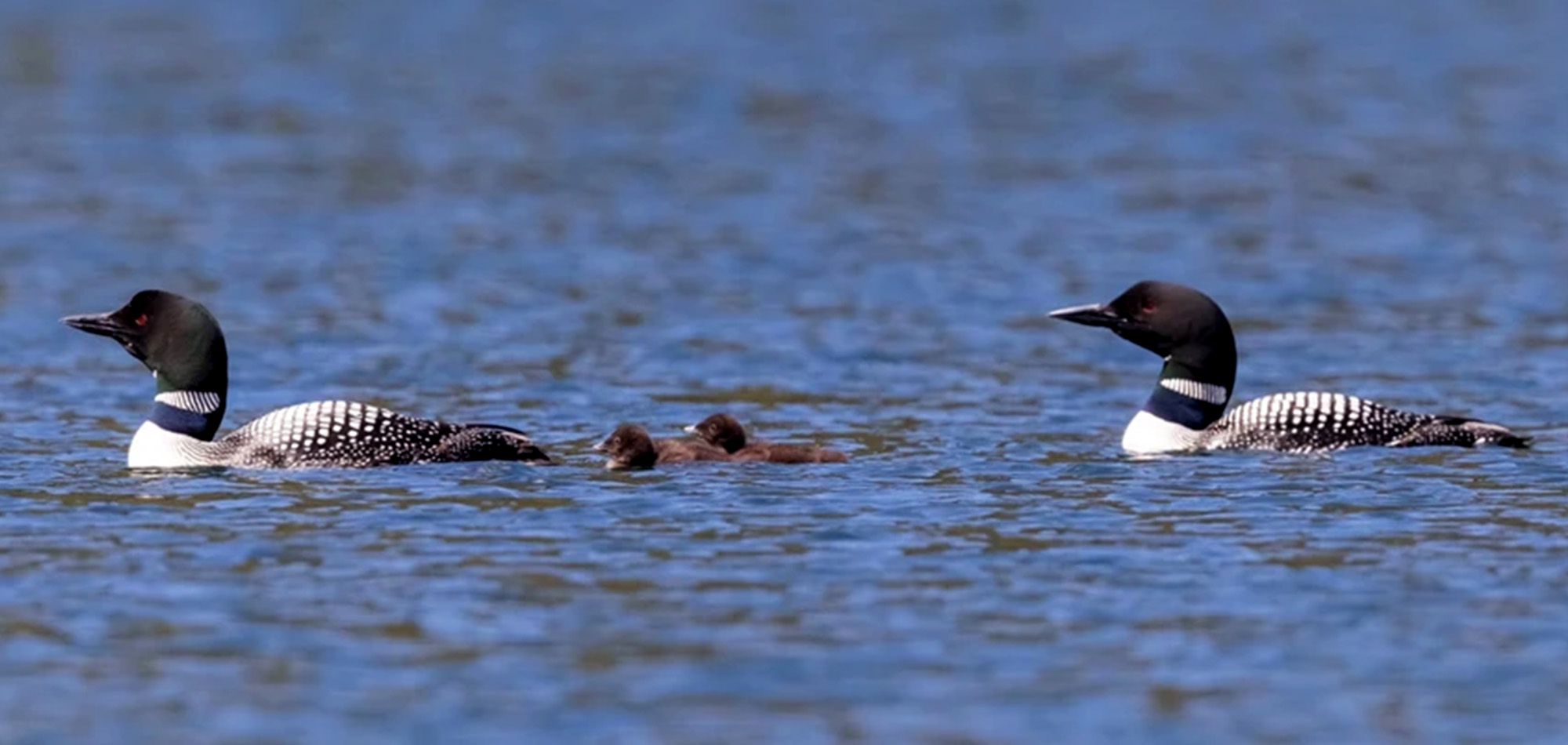Washington wildlife officials are trying to get to the bottom of an unusual poaching case involving a family of common loons that were shot and left to waste over the weekend. They say the protected birds were killed in Okanogan County in the northeastern part of the state, where only 12 known breeding pairs remained as of the latest count by the Washington Department of Fish and Wildlife. The recent poaching incident brings that number down to 11.
Several conservation organizations, including Delta Waterfowl and the Washington Waterfowl Association, are supporting WDFW in its investigation. Collectively, the six groups are offering a $6,000 reward for any information that leads to a conviction.
Officials say they recovered the dead loons on June 22, after a member of the public found the bird carcasses floating near Beaver Lake on the Colville National Forest.
“With the help of several concerned community members, the officers recovered two adult loons and one chick. A second deceased chick was reportedly seen in the lake earlier that day,” WDFW explains in a press release. “Multiple witnesses reported hearing gunshots in the area the evening before.”
In addition to being federally protected as a migratory, non-game species, common loons are listed as a state sensitive species in Washington. Killing one is a misdemeanor punishable by up to one year in jail and fines of up to $500 per violation, and WDFW says it can add restitution penalties of $2,000 per bird upon conviction.
Read Next: Man Pleads Guilty to ‘Killing Spree’ of Thousands of Eagles, Accomplice Still at Large
Although the birds have been making a comeback in recent decades, they were thought to be nearly extirpated from Washington by 1979. WDFW says this was mainly due to habitat loss and poaching, in part because of the public’s negative perception of fish-eating birds. Today, the biggest cause of mortality for common loons is lead poisoning from fishing tackle, according to a study in the Journal of Wildlife Management; research shows loons often eat lead weights by mistake as they ingest pebbles to help with digestion.
Biologists keep reasonably close tabs on the birds’ populations, which have gradually increased since 1995, when only four breeding pairs were thought to exist in all of Washington State. As migratory birds, they spend their winters on coastal estuaries and travel inland to large reservoirs in the spring and summer, where they mate and raise chicks. A few of these brood areas lie west of the Cascade Mountains, according to WDFW, but most are in the remote northeastern tier of the state, where officials counted 12 known breeding pairs earlier this year.
WDFW encourages anyone with information about the poaching incident to contact the agency by email or by calling 877-933-9847. Members of the public can also submit anonymous tips through through WDFW’s website.
Read the full article here




